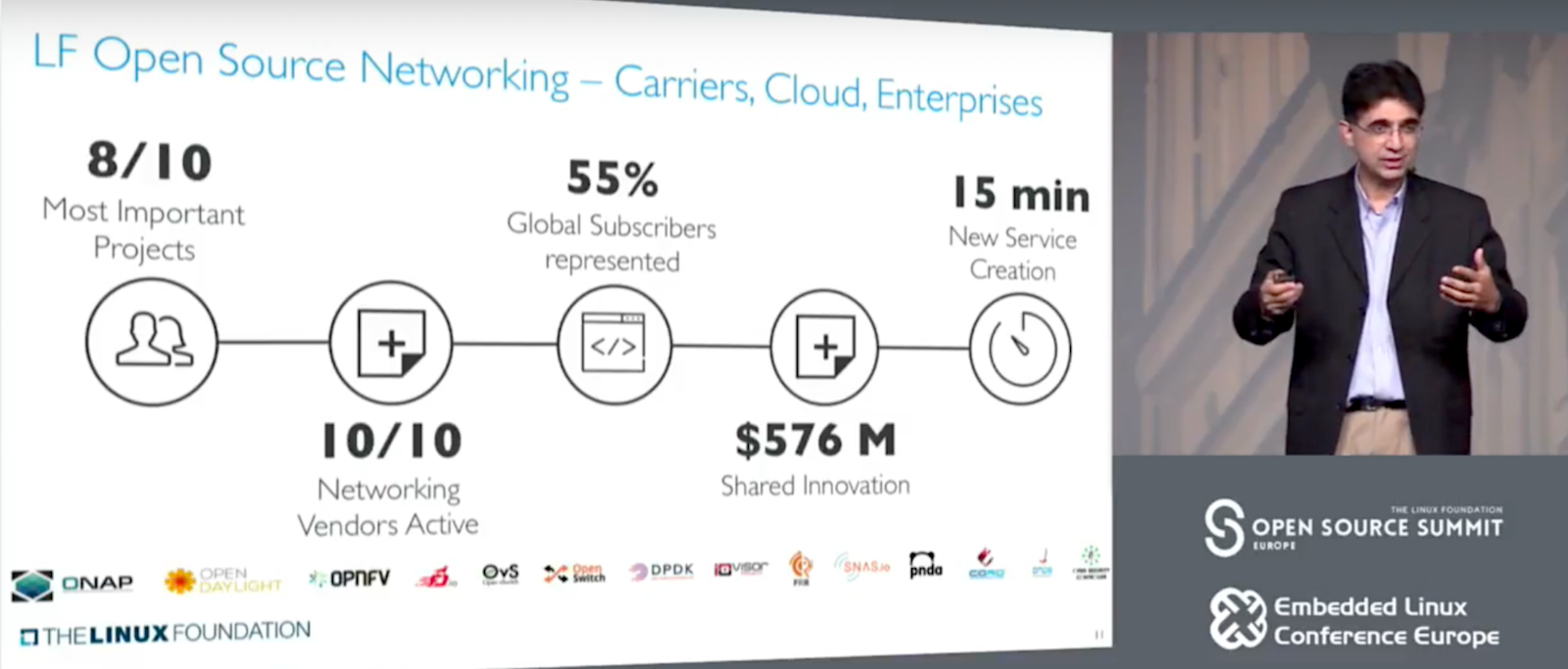Computer networking data has to be exposed, because packets can’t travel blindfolded, so join us as we use whois, dig, nmcli, and nmap to snoop networks.
Do be polite and don’t run nmap on any network but your own, because probing other people’s networks can be interpreted as a hostile act.
Thin and Thick whois
You may have noticed that our beloved old whois command doesn’t seem to give the level of detail that it used to. Check out this example for Linux.com:
$ whois linux.com Domain Name: LINUX.COM Registry Domain ID: 4245540_DOMAIN_COM-VRSN Registrar WHOIS Server: whois.namecheap.com Registrar URL: http://www.namecheap.com Updated Date: 2018-01-10T12:26:50Z Creation Date: 1994-06-02T04:00:00Z Registry Expiry Date: 2018-06-01T04:00:00Z Registrar: NameCheap Inc. Registrar IANA ID: 1068 Registrar Abuse Contact Email: abuse@namecheap.com Registrar Abuse Contact Phone: +1.6613102107 Domain Status: ok https://icann.org/epp#ok Name Server: NS5.DNSMADEEASY.COM Name Server: NS6.DNSMADEEASY.COM Name Server: NS7.DNSMADEEASY.COM DNSSEC: unsigned [...]
There is quite a bit more, mainly annoying legalese. But where is the contact information? It is sitting on whois.namecheap.com (see the third line of output above):
$ whois -h whois.namecheap.com linux.com
I won’t print the output here, as it is very long, containing the Registrant, Admin, and Tech contact information. So what’s the deal, Lucille? Some registries, such as .com and .net are “thin” registries, storing a limited subset of domain data. To get complete information use the -h, or --host option, to get the complete dump from the domain’s Registrar WHOIS Server.
Most of the other top-level domains are thick registries, such as .info. Try whois blockchain.info to see an example.
Want to get rid of the obnoxious legalese? Use the -H option.
Digging DNS
Use the dig command to compare the results from different name servers to check for stale entries. DNS records are cached all over the place, and different servers have different refresh intervals. This is the simplest usage:
$ dig linux.com <<>> DiG 9.10.3-P4-Ubuntu <<>> linux.com ;; global options: +cmd ;; Got answer: ;; ->>HEADER<<<- opcode: QUERY, status: NOERROR, id: 13694 ;; flags: qr rd ra; QUERY: 1, ANSWER: 4, AUTHORITY: 0, ADDITIONAL: 1 ;; OPT PSEUDOSECTION: ; EDNS: version: 0, flags:; udp: 1440 ;; QUESTION SECTION: ;linux.com. IN A ;; ANSWER SECTION: linux.com. 10800 IN A 151.101.129.5 linux.com. 10800 IN A 151.101.65.5 linux.com. 10800 IN A 151.101.1.5 linux.com. 10800 IN A 151.101.193.5 ;; Query time: 92 msec ;; SERVER: 127.0.1.1#53(127.0.1.1) ;; WHEN: Tue Jan 16 15:17:04 PST 2018 ;; MSG SIZE rcvd: 102
Take notice of the SERVER: 127.0.1.1#53(127.0.1.1) line near the end of the output. This is your default caching resolver. When the address is localhost, that means there is a DNS server installed on your machine. In my case that is Dnsmasq, which is being used by Network Manager:
$ ps ax|grep dnsmasq 2842 ? S 0:00 /usr/sbin/dnsmasq --no-resolv --keep-in-foreground --no-hosts --bind-interfaces --pid-file=/var/run/NetworkManager/dnsmasq.pid --listen-address=127.0.1.1
The dig default is to return A records, which define the domain name. IPv6 has AAAA records:
$ $ dig linux.com AAAA [...] ;; ANSWER SECTION: linux.com. 60 IN AAAA 64:ff9b::9765:105 linux.com. 60 IN AAAA 64:ff9b::9765:4105 linux.com. 60 IN AAAA 64:ff9b::9765:8105 linux.com. 60 IN AAAA 64:ff9b::9765:c105 [...]
Checkitout, Linux.com has IPv6 addresses. Very good! If your Internet service provider supports IPv6 then you can connect over IPv6. (Sadly, my overpriced mobile broadband does not.)
Suppose you make some DNS changes to your domain, or you’re seeing dig results that don’t look right. Try querying with a public DNS service, like OpenNIC:
$ dig @69.195.152.204 linux.com [...] ;; Query time: 231 msec ;; SERVER: 69.195.152.204#53(69.195.152.204)
dig confirms that you’re getting your lookup from 69.195.152.204. You can query all kinds of servers and compare results.
Upstream Name Servers
I want to know what my upstream name servers are. To find this, I first look in /etc/resolv/conf:
$ cat /etc/resolv.conf # Dynamic resolv.conf(5) file for glibc resolver(3) generated by resolvconf(8) # DO NOT EDIT THIS FILE BY HAND -- YOUR CHANGES WILL BE OVERWRITTEN nameserver 127.0.1.1
Thanks, but I already knew that. Your Linux distribution may be configured differently, and you’ll see your upstream servers. Let’s try nmcli, the Network Manager command-line tool:
$ nmcli dev show | grep DNS IP4.DNS[1]: 192.168.1.1
Now we’re getting somewhere, as that is the address of my mobile hotspot, and I should have thought of that myself. I can log in to its weird little Web admin panel to see its upstream servers. A lot of consumer Internet gateways don’t let you view or change these settings, so try an external service such as What’s my DNS server?
List IPv4 Addresses on your Network
Which IPv4 addresses are up and in use on your network?
$ nmap -sn 192.168.1.0/24 Starting Nmap 7.01 ( https://nmap.org ) at 2018-01-14 14:03 PST Nmap scan report for Mobile.Hotspot (192.168.1.1) Host is up (0.011s latency). Nmap scan report for studio (192.168.1.2) Host is up (0.000071s latency). Nmap scan report for nellybly (192.168.1.3) Host is up (0.015s latency) Nmap done: 256 IP addresses (2 hosts up) scanned in 2.23 seconds
Everyone wants to scan their network for open ports. This example looks for services and their versions:
$ nmap -sV 192.168.1.1/24 Starting Nmap 7.01 ( https://nmap.org ) at 2018-01-14 16:46 PST Nmap scan report for Mobile.Hotspot (192.168.1.1) Host is up (0.0071s latency). Not shown: 997 closed ports PORT STATE SERVICE VERSION 22/tcp filtered ssh 53/tcp open domain dnsmasq 2.55 80/tcp open http GoAhead WebServer 2.5.0 Nmap scan report for studio (192.168.1.102) Host is up (0.000087s latency). Not shown: 998 closed ports PORT STATE SERVICE VERSION 22/tcp open ssh OpenSSH 7.2p2 Ubuntu 4ubuntu2.2 (Ubuntu Linux; protocol 2.0) 631/tcp open ipp CUPS 2.1 Service Info: OS: Linux; CPE: cpe:/o:linux:linux_kernel Service detection performed. Please report any incorrect results at https://nmap.org/submit/ . Nmap done: 256 IP addresses (2 hosts up) scanned in 11.65 seconds
These are interesting results. Let’s try the same run from a different Internet account, to see if any of these services are exposed to big bad Internet. You have a second network if you have a smartphone. There are probably apps you can download, or use your phone as a hotspot to your faithful Linux computer. Fetch the WAN IP address from the hotspot control panel and try again:
$ nmap -sV 12.34.56.78 Starting Nmap 7.01 ( https://nmap.org ) at 2018-01-14 17:05 PST Nmap scan report for 12.34.56.78 Host is up (0.0061s latency). All 1000 scanned ports on 12.34.56.78 are closed
That’s what I like to see. Consult the fine man pages for these commands to learn more fun snooping techniques.
Learn more about Linux through the free “Introduction to Linux” course from The Linux Foundation and edX.


